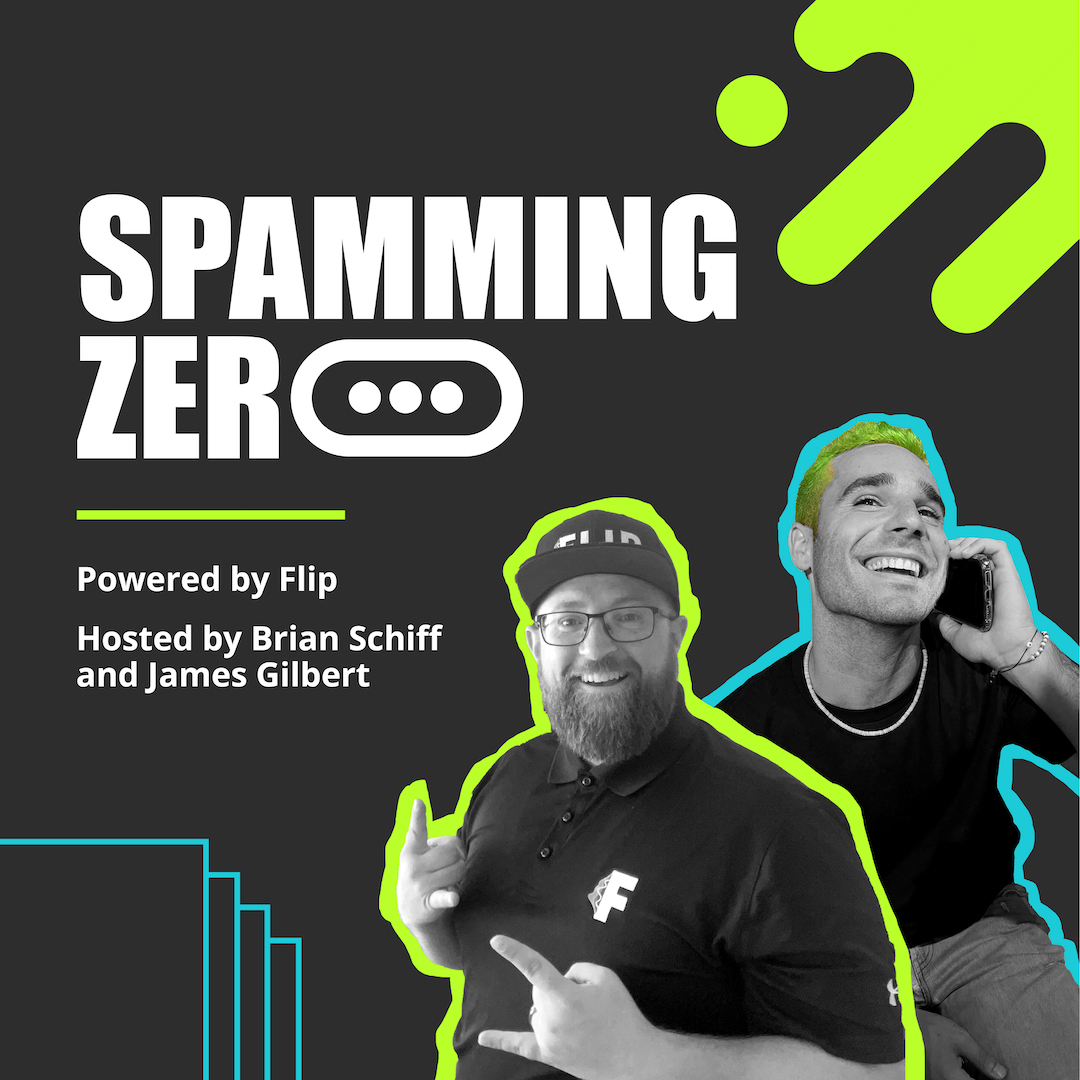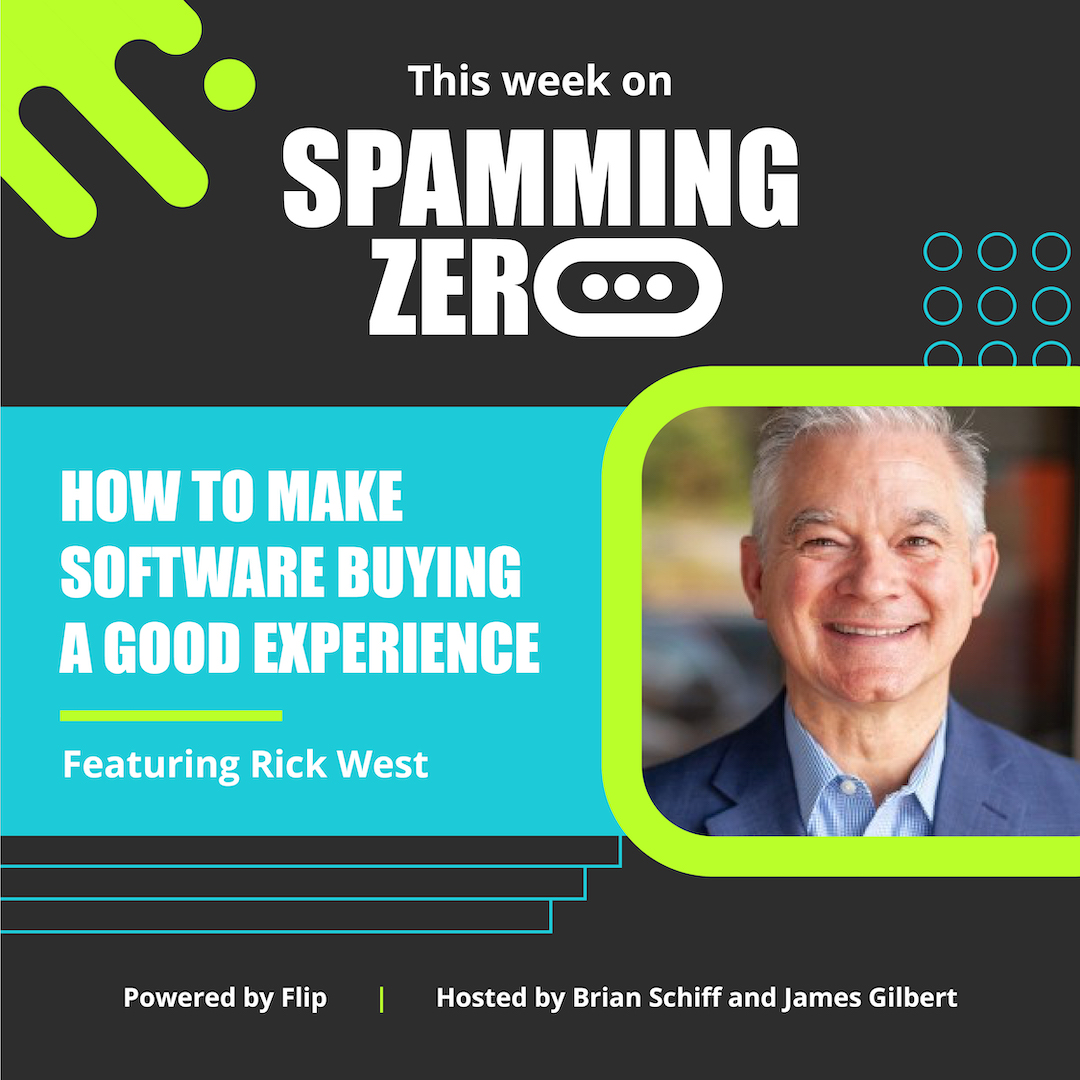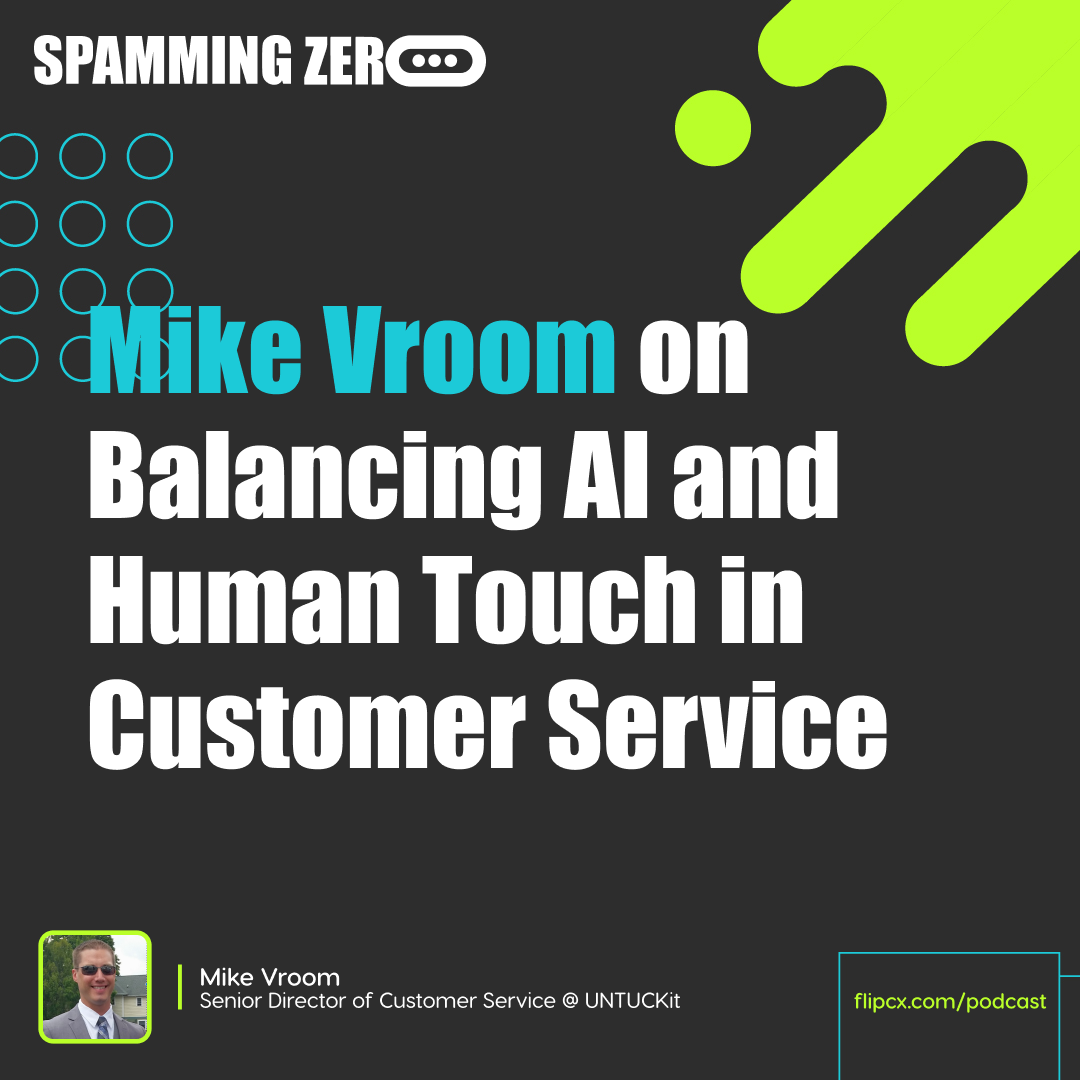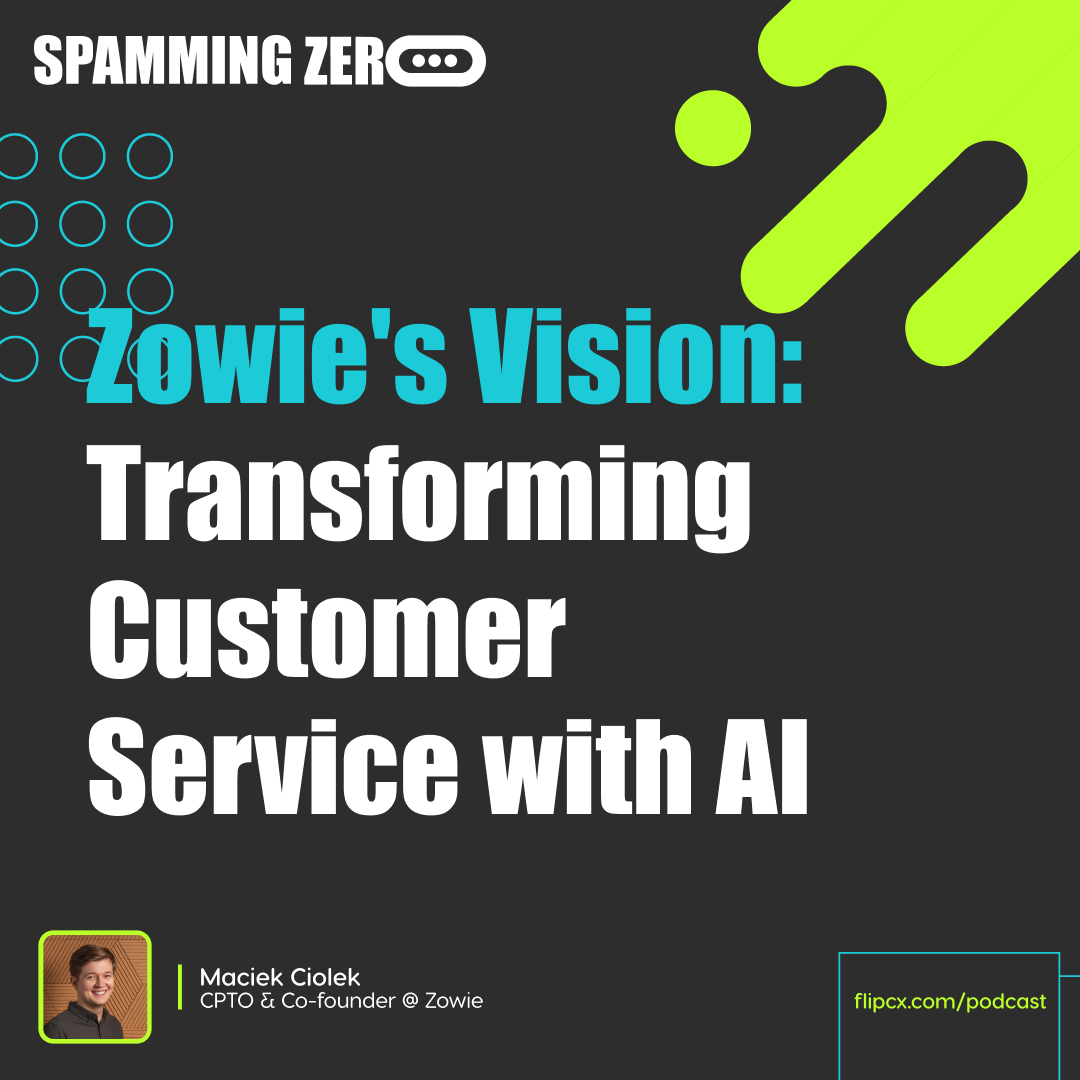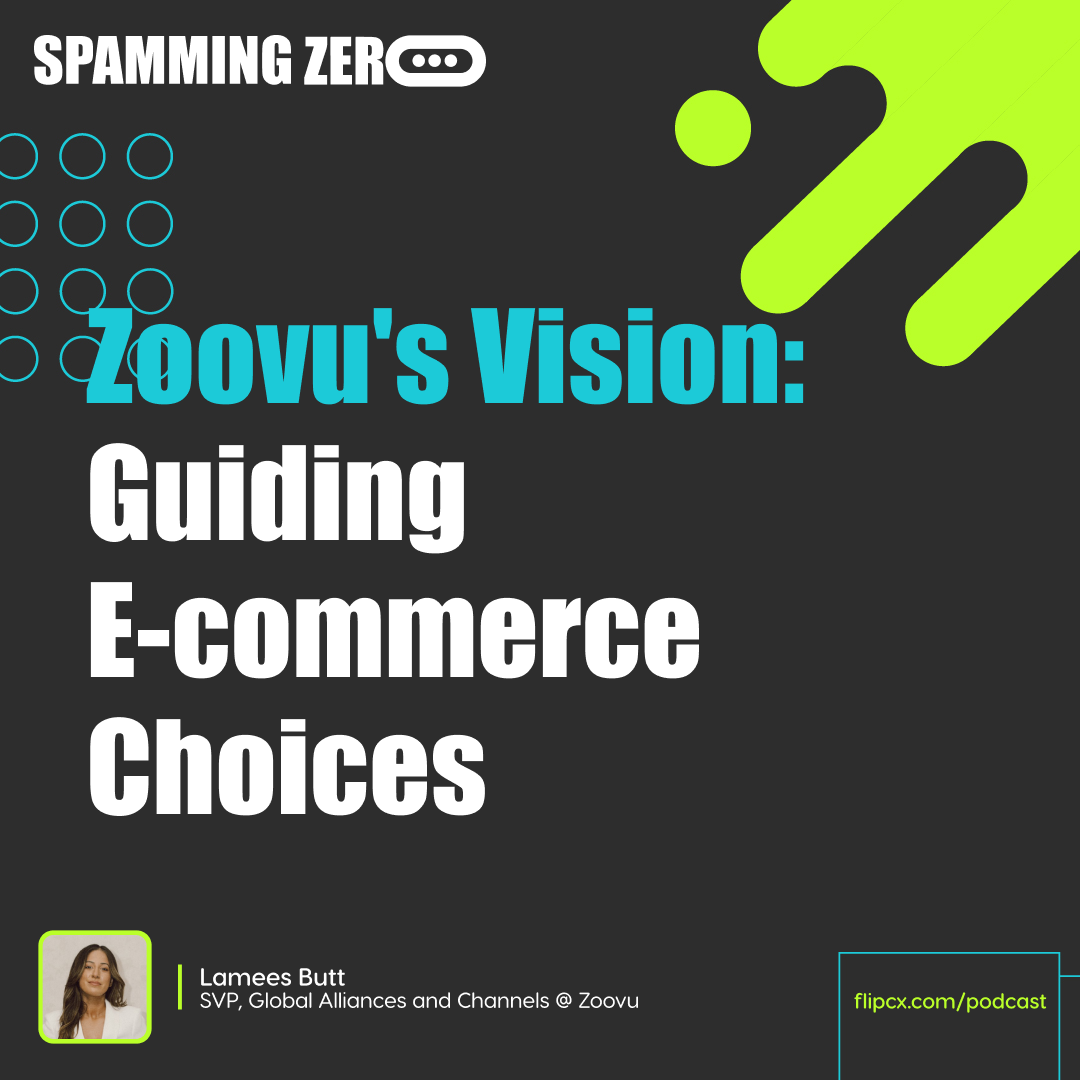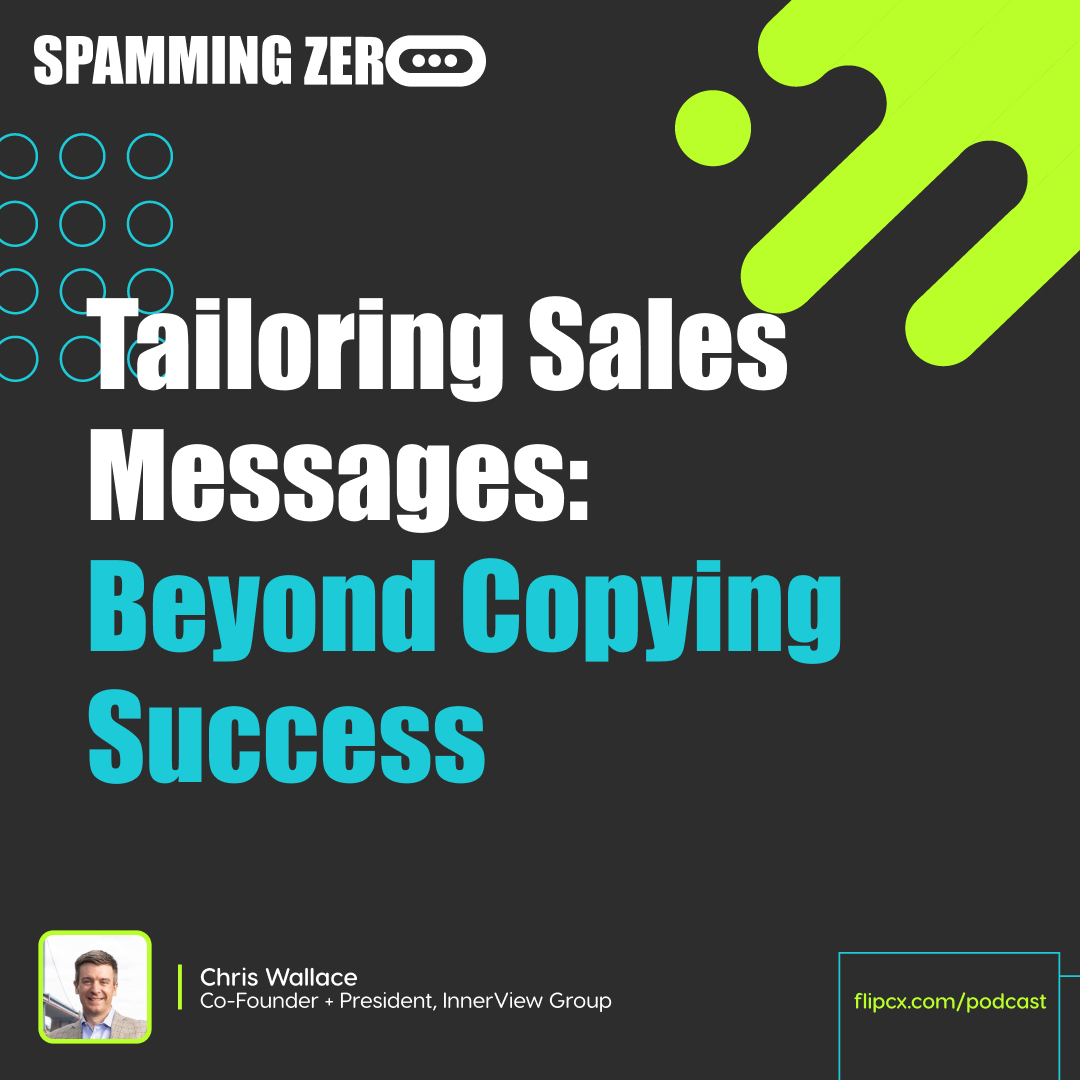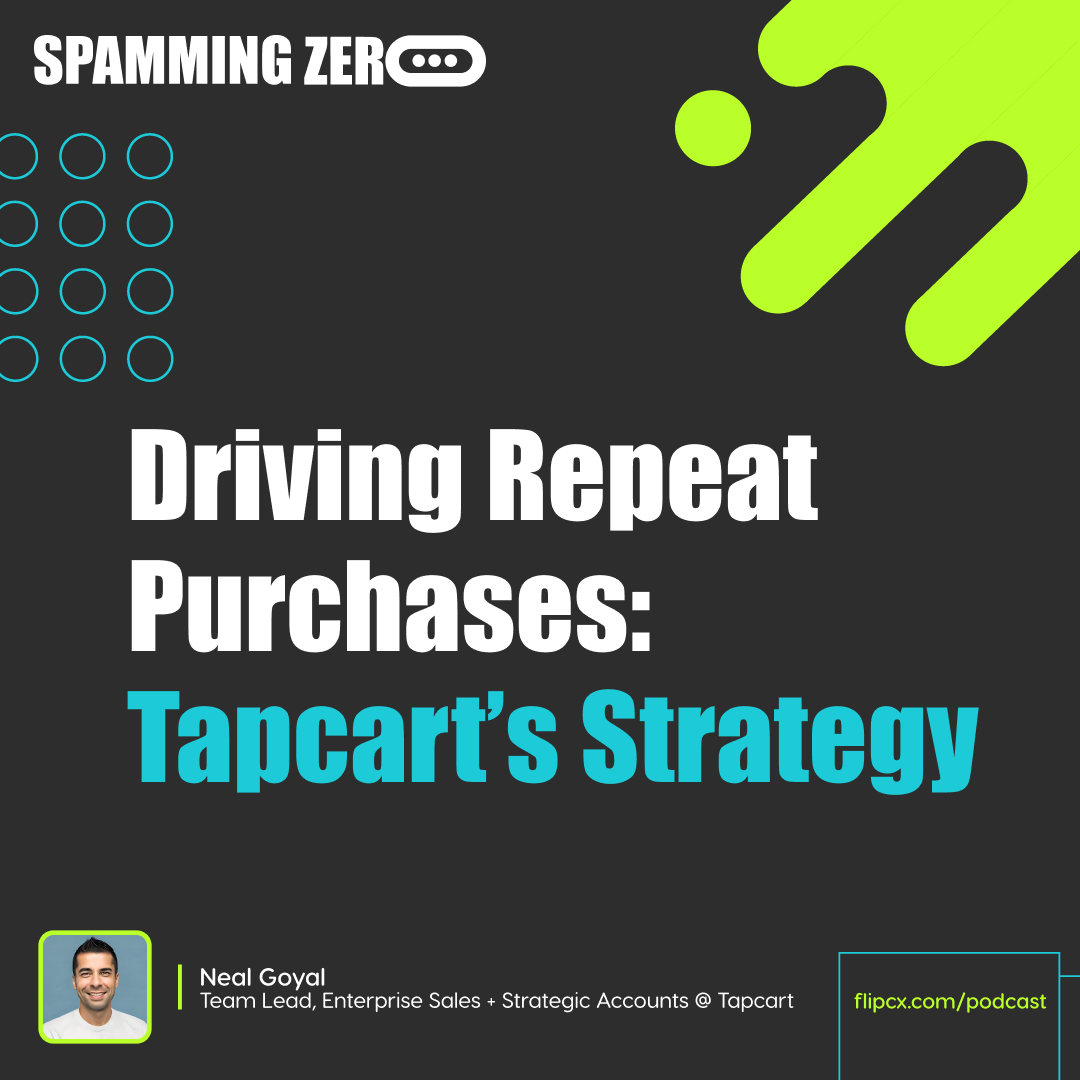Episode 16: How to Make Software Buying a Good Experience
- 0.5
- 1
- 1.25
- 1.5
- 1.75
- 2
James: I'm James.
Brian: And I'm Brian.
James: And this is Spanning Zero. Rick, welcome to the show.
Rick: Good to be here, James, Brian. Look forward to it, man.
Brian: Yeah, I'm excited.
James: This topic, oh, my gosh, does it give me heartburn. It makes me want to reach through the screen, and really go at people sometimes, because this is such a painful thing. And everybody seems to have this pain of the buying software, and how it's just not an easy thing. And we push people down a path that isn't necessary. Let's unpack this business idea, of buying software. Because I do think that there are fundamental roadblocks, or what I would call," friction", in the current software. Especially in the B2B buying software. What do you think is, in your mind, what's the most common mistake that you think businesses are making right now?
Rick: Yeah, I need to look at it from a buying standpoint, if I were actually buying the software today, I go back to the analogy of my dad. Let's take it back to kids, again. My dad was an avid sports person, and he would reinforce, and I think he did this so that my mom wouldn't complain how much money we were spending, but his point was, if you buy the best equipment you can buy, this is what it's going to save you in a month. Because if you buy crap today, you're going to waste your time for 30 days, you're going to sell it for 20 cents on the dollar, and then you're going to go buy the new stuff in a panic, and probably not going to buy it on deal. So his point was, when a season came up, soccer shoes, catcher's mitt, pick a thing, let's, in advance, buy the best we can buy, and let's strive to get there. Now, in business software, the exact same thing happens. We made this sophomore mistake a year ago. We bought software A because it was a little bit cheaper, thought it would be easier to use, and what do you think happened in six months? Not happy, we outgrew it, we've wasted six months of onboarding, it became so sticky, all of our data's in there. We should have listened to my dad, James. We should have bought the best software we can aspire to. And again, I'm not saying everyone has to have the$ 500 cleats, but I should not have bought the$ 15 pair. I should have gone into that a 100, 150, I should have bought the best I could. And I see that all the time with software. Common mistake people make, because you're trying to save a dime, but you lose a dollar long term. And we all know the number one issue that everyone has, is that when you lose time, you can't get it back. It's not a dollar issue, but that time we spent investing, learning, being educated on the software, is all throw away right now. And we know that.
Brian: It's so interesting to think about. I feel the term that people typically use for this in the software world is, best of breed. It's interesting to break that down and say, okay, what are actually the things that contribute to a product being best of breed. Because you can go, and you look at, take any category that's out there, take CRM, biggest B2B software category. There are, I don't know, hundreds, thousands of CRM products on the market. The fundamental basic functionality of them is all the same. They all have the same core features. So, what are the things that actually makes sales force 10 or a 100 times better than that cheap, off- the- shelf thing? And sometimes it's obvious, but sometimes it's also very non- obvious what is making truly best of breed.
Rick: Let's look at, are you guys Mac guys, Apple guys, or are you Lenovo, or something? What are you?
James: I'm a Mac guy.
Rick: People in the tech industry would argue, my son especially, who would be an Alienware guy, he's like, the Macs are terrible. They can't even run the high end part of Excel, processing. And I would argue that, some of those computers are really best in breed. Do you know what Mac does for me? Friction, baby. Nothing. I've downloaded drivers, it's coming in. Now I lose things. I've got analysts over here, that cannot use certain features in Excel, I get that. And I might lose a couple other pieces of software, because it just doesn't work well on a Mac. But I'm willing to lose some features, because I would argue the Mac, in the big scheme of things, is a solid A, to A minus, based on what you're trying to do. And the A plus also has other detriments, which takes them down to an A minus. So the perfect computer is based on who you are. But you've got both camps on Macs versus PCs. And both are right. But we chose the route of clean reliability, I'm not worried about the viruses, all the things that we love about it. But I've got three or four people in the organization that hate their Mac. But that's okay. And so that's how we began to look at technology along those lines.
James: But you bring up a great point here. And that's the convenience and frictionless experience that exists with software. And we haven't even dived into the buying process.
Rick: Right, right.
James: Which is a whole can of worms that I can't wait to unpack. But the usability of software. One thing that I want to just challenge every brand out there that might be listening to this is, stop making a promise that you can't keep. I think that, it starts there. The fundamentals of, you offering a service or a product to any business that's going to be operating it, meaning they can have opportunity cost as well for operating your software. Meaning, it can have a negative impact by implementing your software. And you make a promise that you can't keep? Oof.
Rick: It's bad. It's-
James: That's real bad.
Rick: So part of, when we looked at that promises made, promises kept, analogy that's in there. I understand the friction aspect of things, and I get that experience people are having. But I'm kind of a stair step guy. And what I find with software is that, if you've ever been to a stadium that have the two small steps and a long one, two small steps and a long one, sit in that stadium and watch people fall. It's all day long. Because steps are universally 8 inches, 10, 8, and 10. Or 9, 11, 9, 11. So you can run up and down steps without looking at the stairs. You can hold two beverages, and three things of popcorn, and you never look at the steps, unless that step is one inch off, or you've got a really long step, or a platform. I think software design needs to be the same way. It's all about the rigors of stairs. And then make things so intuitive, that it works. It doesn't have to be the best, the most complicated, or the most influential thing you've ever seen. And that's why I think Apple gets it right. The iPhone gets it right. Because it's a stair step. It's such a simple... And, when I go from app to app or I go from program to program, they've all followed these stairsteps. What's difficult, if someone says, no, no, no, no, no, James, Brian, I know better. I'm going to completely change the way you operate software, and people open up, they're like, ugh, because I've been trained. So, if you're a developer out there, at some point in time, you got to realize, there are norms that are expected. And those stair steps are actually to be used to your advantage as opposed to, I'm going to completely blow up the way people do things, because I'm smarter than Apple and Amazon, all those guys, and I'm going to create my own thing. And that's really, really heavy lifting.
Brian: It's almost like, I feel like the common phrase for it would be, best practices. Follow the best practices that exist in, if you're building a web app, and you're designing the experience, follow the best practices that exist in the industry. And it's interesting how taking this effort, and going against the best practices, and when done well, that can be an amazingly powerful thing. When Apple started creating Apple products, that was different. Different was their word, their motto, their MO. And we even talk on the show a lot about, the idea of being unconventional, and going against the grain, doing something different, and standing out. So, there's almost this balance that needs to be struck there. And I always love this analogy of... Everybody grows up when you're learning in school, you're learning how to read and write, and you're taught the very proper utilization of the English language Like grammar and spelling. So you see, amateur writers are not good, they're misspelling, not using grammar well, it's all a mess. And then you get to medium, to expert level understanding and skill, and there's this homogeny, and everybody gets it, and they know the rules, and they're following the rules. And then when you get into that upper, upper echelon of elite writers, they are breaking the rules, but they are doing it with incredible precision and deliberateness, where they're not just going rogue to go rogue. They are following the best practices, and then being deliberate about, hey I'm going to do something different here to be unique and create a unique experience.
Rick: In terms of, there's nothing new under the sun. So for example, Apple says there's a yellow, orange, green dot on the left, you can click one of those to minimize or X out. And then, Microsoft says, there's the same thing in the upper right hand side. But, there's going to be something like that. Oh no, no. In our world, you're going to click three things and do this. Well, that's a universal no. It's a hard no, right. Well hey, I think you should do five steps to do this, because the steps are great. You know what the universal is? Fewer steps are better. So these universal truths, these stair steps of truths, those are the piece, there's nothing new under the sun, the universal truths are there in front of us. And we would argue, and we did this when we were going down the path of developing Plum, we didn't want to create a totally different experience, that would cause someone to say, yeah but, this is the way I shop today. Why are you guys different? And we're like, we're not going to overthink it. Now some people could say, there's not an original bone in your body, Rick, you've stolen shamelessly. But I would argue, these are universal truths of how we shop. These are universal truths on how we do UIUX. And there are very few things that require such amazing originality that we're going to do something different.
James: I want to unpack a little bit of this whole idea, online.
Brian: Okay.
James: True story. I've told this story on the podcast already, I'm going to tell it again. I went through a process, starting here at Red Route. I knew exactly which software I wanted. I knew exactly what I could do. I knew its value. I had a budget. I was a decision maker. I did not need a call. I even knew what I could get from a pricing perspective, because I've used it before. So there's this whole idea of, I still had to go down the same journey as somebody who doesn't have decision, doesn't have budget, also has never used the software before. I had to go down that same journey. Four software companies out there, that are massive. Few of them are even category creators. And I won't do business with them, because of this reason. They force you down a path. And this is, I think a fundamental thing that is broken in software buying. It's this idea of, everyone has to go down the same path. Everyone has to... You have to get your bank criteria figured out on the sales side. I get why those things exist. And I know that a lot of these things cannot be scaled in a measure that make sense for the entire organization to tackle. But to not have a pathway, of almost no friction at all. There is no reason why I couldn't have gone to the website, filled out a quick form, told them in the notes that said, hey, I've used this software. I'm ready to go. And AE picks it up. There's no reason why they then can't send me over a contract. It doesn't need to go down... Okay, we got to have a call, got to understand your needs. And I had this big rant about it, on social media. And all these people were like, yeah, yeah, yeah, right. And then there were some people out there were like, well, yeah, but, don't we need to understand your needs? Don't we need to understand why you're using the software? No, you don't. Because I know why I'm using the software. I already have used your product.
Rick: But James, they have to understand that, when they're designing the software. If you've designed the software for my role, you already know why I want to use it, right? Because you're telling me you're best in class, so there's the reason they ask the question. Who cares whether it's widget A, or widget B. You don't care if I'm in sports, or CPG, it doesn't matter. What matters is, is that you need a CRM system to do X. You already know my Y. So that was kind of the premise of us driving Plum, and how we went down this path, is that... I call it the Amazon effect, or the Tesla effect. I'm on Amazon today, and you guys have probably purchased a thousand dollars TV,$ 2, 000 TV. You didn't click on the TV and say, I want to talk to someone, then a salesperson calls you from Amazon and said, hey, I'm the local Sony guy. Let me tell you why Sony's best. And then I click on something and say, hey, I'm the new LG guy. And you talk to five sales reps on Amazon... you would be appalled. That would happen. Well you can now buy a Tesla and say, why don't you talk to the Tesla guy, and let me tell you why you should buy Tesla. How are you going to use the Tesla? Are you going to use it for home? Are you committing... Really? So you'll spend 70, 80 grand on a Tesla with two to three clicks. The entire process will happen with DocuSign. You wire transfer money. And some company shows up with keys a week later, and they drop it in your hand. Vroom has figured that out. But yet there's industries, in my case, the businesses service industry, that acts like we are a real estate agent, or a car dealership. Oh, you really can't buy a house until you talk to the realtor, who then talks to the office manager, who then talks to the title company, who then talks to the bank. And now we're starting to see the B to C world come around saying, I think I can buy a house after watching the video, and click on Google maps and do the street view, and I can see the neighborhood. I can then look all the data associated with the neighborhood around crime and what the schools are. But you don't understand James, in order for you to buy software, you need to talk to the pre- sale guy, who talks to the AE, who talks to the salesperson, who then talks to the client success person, because you can't spend$10, 000 without having these five meetings over two months. That's asinine in today's world. And that was really the epiphany we had, when we started building this B2B software for Plum, so that you could buy retail services with just a click, click. By the time you go to the cart and click out, you've already got data ratings and reviews, auditing inside of store, merchandising. It's already complete. And you don't have to talk to anyone. And as much as I like to talk to James and Brian, you don't need to talk to me. Don't. You could self- select and sell buy. So that B2C experience, is coming into the software world. And we got to get ahead of it, or because whoever figures it out first, is this going to dominate? I'm telling you you're going to dominate.
Brian: You can almost say that, bad experiences create very low expectations. So, James just gave us this example of buying software, and he walked through what a ideal state would look like. And the ideal state involved, filling out a form, waiting for a account executive on the other side, to send a contract that needed to come back the other way to sign. That is even three levels down the rung of what ideal friction list should be, from going to Amazon, and just clicking the item you want, and checking out. You're describing an experience that you wish existed, and it is still a couple rungs from what good should actually look like. And it all ties back together, for me, to this idea of people, when they are buying something with their brain, there are three considerations that come into it. One, is the perceived value. The second, is the level of effort that is required. And then the third thing is, the certainty with which I will achieve that end state. And there's this classic thing of, everybody over indexes on the first pillar. Even though, all three of them factor in pretty equally into the decision making process. So, one of the things that we've noticed in our business is, automation is like the core value driver, the benefit, the value that we're selling. And, we've noticed that automation is something that people understand, and it generates interest. And people will start evaluating us, people will become interested in what we're selling, based on the benefits that they can receive from the automation. But as we look at the journey that customers follow, and how these processes play out, while automation is getting people to the table, the low level of effort, actually plays a bigger role in driving quick and successful outcomes, and signups, and users of the product, even more than the actual value that they're getting on the other side of the automation. They go hand in hand. And I saw this great tweet, and it was this guy basically saying, there are so many software companies out there that are pitching themselves on the benefit of, I can deliver the same value, but it's 10 times easier to use. And what he said was, if you're going to go and you're going to say that your unique advantage is that you are 10 times easier to use, then you should be 10 times easier to buy.
Rick: Yeah, it's crazy.
Brian: And almost never is that-
Rick: We run into the same thing in our business all the time that, and we hear our customers saying, Rick, by the time I use agency A, it's sometimes two to three weeks before I can even schedule an appointment. And Rick, you guys have already executed and delivered the data, delivered the ratings and reviews, we're finished in two or three days, and there's no phone calls. So, that goes back to that earlier conversation we're having about time. Time is so valuable, and if software's written correctly, and the buying experience is really laid out in a frictionless way, that time just gets compressed. And it doesn't take me three 1 hour calls, three 30 minute calls. It might take me one 10 minute call, but it's everything I need, and I can sign and pay someone. But let me give you a little baby tangent to this conversation. This happened to me yesterday. I'm an avid cyclist, and I'm in the market for a new Garmin cycle computer. But as I compared models, they had a button that said, do you want to only see where there's differences, and how the differences are? I said, yes. And I went from this page, this deep, really close. And it only showed by category, where was different, and why it was different. That shopping experience for me, because I was going to have to read through all of these details, they just whew, took it in. Now, Garmin only showed me their products. But now imagine that buying experience, because we all have to do it, we have to go online, we have to find some third party, is it G2, pay a fortune to them, so that they'll tell you how things are different. But imagine a world where I can come in, and say, I want best in breed, I've got these three, and then, not generically, but a really smart person, like Brian or James says, let me tell you how these are different, and why they're different. Man, that's a game changer. Because we all know, they don't want to do that, because you have to keep it confusing. But that was a really cool experience for me using Garmin.
James: There was an argument, I actually got into, during this post. And somebody was arguing with me about, how they need this data that they collect, during the process of having, just like you mentioned, Rick, like the three or four calls, to make their product better, and change their GTM. Now, here's what I'll tell you. First of all, that's bullshit. There is no way you are using that data, for the purpose of what you're saying you're having those calls for. I know that for a fact, because most sales data is very rarely put into a CRM. How do I know that? I made a living off of literally consolidating thousands of CRM systems into one. And your data was very rarely put into a CRM, because you hated a CRM.
Rick: I'm give props to the sales guys, let me tell you how we use our sales team here, so that everyone doesn't get mad at me who listens to this, like Rick, you left us out to dry, James said this, you didn't defend us. Where we've engaged our sales team... Because again, when I have my funnel coming in, it could be an ad, it could be through, again an ad on Facebook, or it could be engage, it could be a form they've seen, it might be a podcast. What we're using them, and I can't remember who you coined this term, but it's that concept of a gray or a black funnel, that you get into the funnel, everything's black and at the bottom, oh, well obviously you got this lead because it came in through Google AdWords, because they typed in field agent. So what we've used our sales team to say is that, hey, how did you first hear, if you can recall? They're like, oh yeah, I heard them on a podcast. Without that, I wouldn't have the data that I need to have, because that podcast could've been two months ago. So I would argue that the sales team for us, it's not 100 percent, let's say on 40, 50 percent, they give me a flavor that I wouldn't have. And to your point, it's not even on the CRM, this is on slack. Hey, talked to someone, so they heard about this, talked to someone, heard about this, they are slacking us... Then our marketing team, takes that information and says, okay, let's go push the ratchet up over here, or change something over there, we're getting some good feedback. So I'm going to give them props where props are due.
James: And I appreciate that. And by the way, I do think there's value there.
Rick: Yeah, flavor.
James: For sure. But I am saying, the three person, or three time meeting that you had to have before you bought the software, is very so the experience that I had. And there is no way that the data that they gather in that 30 minute call, is being leveraged to improve the product.
Rick: Totally agree.
James: And if it is, more power to you. But I'm saying standardly across the majority of the software out there, I don't buy it.
Rick: I agree.
Brian: Let's say that, the sales people are getting all of this data into the systems where they need to be, such that it can be aggregated, and it can be leveraged at scale by other parts of the organization. That would be great if that was the case. Couldn't 90% of this be achieved by just having forms that the self serve buyer can just go and fill out themselves?
Rick: Probably about seven, eight months ago, is that we were over forming our process. We started the exact same path. And what we realized was, is that, let's start eliminating gates. So we took this service, and we wanted to productize at least a small drink, or the most efficient piece of the service, so that people could buy without even putting in a form. And then we came to the form piece, our point was, let's not do a form that gets to a gate that gets to a phone call. Let's take that form process, because with enough AI, and kind of machine learning, I can take that form in near real time, and get you to the solution you're looking for. I still don't need to get a phone call from the form. So we took that concept, and made it kind of a machine learning, I said, AI, it's really more machine learning, to get me to a point, and we're not there yet, but we're getting really close. And you go from 20 percent, to 30 to 40, you get more percentage, it says, gosh, I like the way I'm answering these questions, and it gets me to a result. I still didn't have to have a call.
James: It's not that people don't like to fill out a form. It's that they don't like to fill out a form, to then get spammed. And they also don't like to fill out a form when they're not actually getting real value. It's not the form, okay. Here's the thing, I would literally right now, buy, if I had the budget, so if Brian said, James, here's$ 50,000, go buy this software that is very unique, and we need it, okay. I would go to that company, and if I had the opportunity, would love to never talk to sales at all. And if it was done through chat, fine. Ask your questions, ask your bank criteria through chat, ask your bank criteria. Let me get on a phone call with a bot, and just walk me through it. You don't need to be a salesperson, or a human on the other side. It can be a bot, it can be automation. But get the, out of the way. That's the idea.
Rick: If you had a podcast on just product leg growth, the concept behind of it is, if you know your business better than the person that's buying it. So Brian, you know your software, you know your business better than anyone, through content for those that are visual, okay, videos, so someone that wants to watch it, or audio, whatever it may be, if whatever the learning mechanism is for them. I should be able to know, there's not 20 questions, there's probably 5. And I should be able to answer the questions in the way that you want to learn, so that I can actually make a decision, or at a minimum say, I'm still not sure, I'll take that phone call, because I've made that decision. As opposed to, I'm making the phone call because, you could be 10% of what I need to know. And that's the frustrating part, because you already know the questions because, you've already done the sales calls for a year. You could record every sales phone conversation, and say, well, it's this question, this question, this question. Oh, here's an exception. Why is it an exception? Oh, that vertical has unique question. Great, let's create a vertical page in our website that says, hey, if you're part of this vertical, you might have these two unique questions. But you know what? They don't have 10. And that's the part, he was like, no, Rick, you don't understand, we need to have that engagement on the phone. And I said, that's just not correct, because when I push on it, I get the same five questions. And I push on it again, and the vertical has two unique, not five. And that's the part that we should be able to shame on us, if we can't create an interesting UIUX, that allows people to self select, self educate, and either make a purchase decision, or say, I want to talk to a professional before I buy. Because there are still some of us out there, that still aren't ready to click. And that's okay, but you're never going to eliminate the sales function. That'll never go away. You still want to have that conversation. But I want to choose to have a conversation, versus you think and forcing me to have it.
James: Yeah.
Brian: Oh yeah. It's about giving the optionality. Not saying, we're forcing down one path, and now we want to force down another path. The other thing that's interesting, and we've been talking about this a little bit with our own sign up, and set up process here at Red Route, is increasingly... Yes, you can have whatever, three, four or five pages. People select their vertical, people input their information. But you look at little things like, Google single sign on, SSR where it's like, you don't need to go and put in your name and put in your email and put in everything. You can just click connect with Google, and suddenly you just took that whole five different fields in a form, and you just turned it into a one button click. There's a lot of that, which can be done by just thinking about what you already know about the person, as they're coming through the process, based on the information that you have on them, and even... Not only making it so that they can go through this process themselves, but then also leaning into the frictionless aspect of it, and pre- filling forms, or having recommendations, or all of these sorts of things to remove the friction, and make it so that it's not even necessarily a form as much as it's like a click, do you want A or B? We think that's true-
Rick: But that's that conversation we had earlier, Brian, is that, there's nothing new under the sun. The stair steps are there. And, whether you like it or not, a Google sign on, or a Facebook sign on, whatever it is, or an Apple sign on, having those three options, have been thought of, people had to figured it out, they're using, yeah but... See, we want to spend the next six months designing our sign on process to make it unique, and customized. I'm like, really? And that's where you said, I just created a flat step. And it made someone stumble, said, oh, I don't know. Do I put my email in again? And they asked me this information, it just didn't feel right. I'm like, really? And so the B to C world has kind of figured that out. Again, we're arguing that in the B to B world, they're laggards. It is just so painful to get to the point where you said, just to have a Google login, is really painful in B to B world. Because, oh, you don't understand the security, and we're too compliant, we have to have all these important things up front. I'm like, I think the Google button will be fine. And so, people your generation, you're going to force that change, because you are not going to buy from someone that has a painful sign in process, and buying process. And I think we're not at the tipping point, we're close. Another 5, 10 years, we'll never have this conversation. You used to make people sign in that way? You've got to be kidding me. And then you look at car dealerships, you're like, Ford just inferred. Maybe we don't need dealerships the way we have them. Are you going to have car? Teslas pushing it. People like Red Route, you guys are going to push that envelope. People say, gosh, I guess I don't need that process anymore.
James: Thank you so much for coming to the show, Rick and being a part of this. Will you do me a favor, answer this one last question. We think it's pretty important that leaders in the world give a flavor of what's important, that we should all be focused on. Throw the business stuff out, and just tell us what you think the world needs a little more of right now.
Brian: Business success, and especially business significance follows this, it follows the speed, and the depth of relationships. I think we've made relationships transactional, and I'm telling you, whether it's your kids, whether it's your family, it's your neighbors, it's your business associates, it's your next promotion, It's your next job. Without relationships, you're going to be a cog in the wheel and a commodity. And it is not pretty to be a commodity. So relationships matter. Fantastic answer.
James: All right, it's been awesome. Thank you so much for joining us on this episode of Spamming Zero. If you have not rated the podcast, please do so. If you don't want to give us five stars, that's cool. We'll earn your five star rating. But give us a rating, and we'll get in front of more people. And if you want to hear a topic that you have not heard yet, Brian or I would love to hear it. Reach out to us on LinkedIn. We'll be around. And we want to hear from you.
DESCRIPTION
Ever feel like you’re just not getting through to folks? Understandable roadblock when you’re a person dealing with—you know—people. However, that kind of frustration far too often plays into the process of buying software. Let’s change that, shall we?
Rick West, CEO and Co-founder of Field Agent, sat down with Flip’s James Gilbert (someone particularly passionate about this topic) and Brian Schiff to talk about what tech companies can—and should—do to make software buying a good experience. This week, on Flip’s Spamming Zero Podcast.
What’s Covered?
- Common mistakes made when it comes to buying software (esp. B2B)
- Defining ‘best in breed’ and ‘best practices” – and how they factor in
- The importance of frictionless experience
- What Rick calls ‘The Tesla Effect’
- Time: our most valuable commodity
- How automation can help
- What the world needs more of (yes, really)
- And more
Ready for more fantastic Spamming Zero conversations ahead? Listen, rate, and subscribe on Casted, Apple Podcast, or Google podcasts.
Today's Host
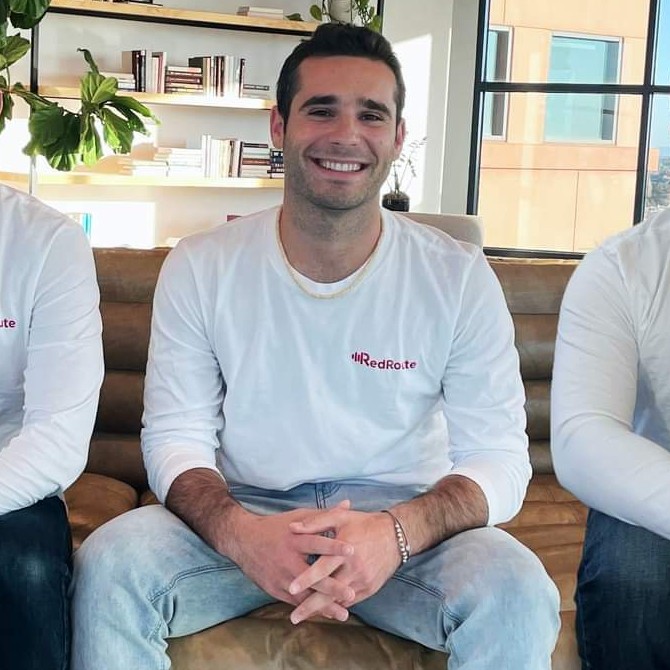
Brian Schiff
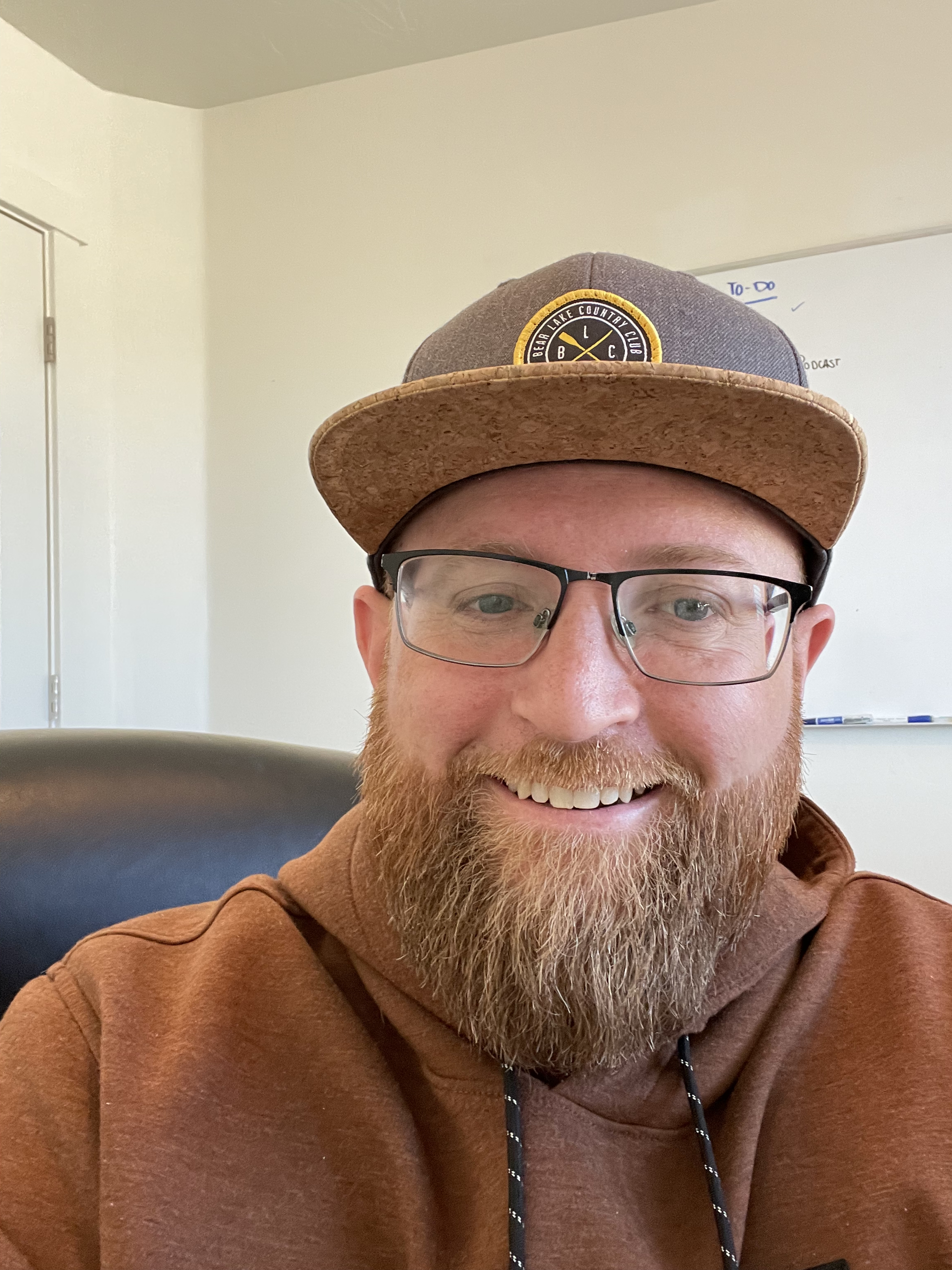
James Gilbert
Today's Guests

